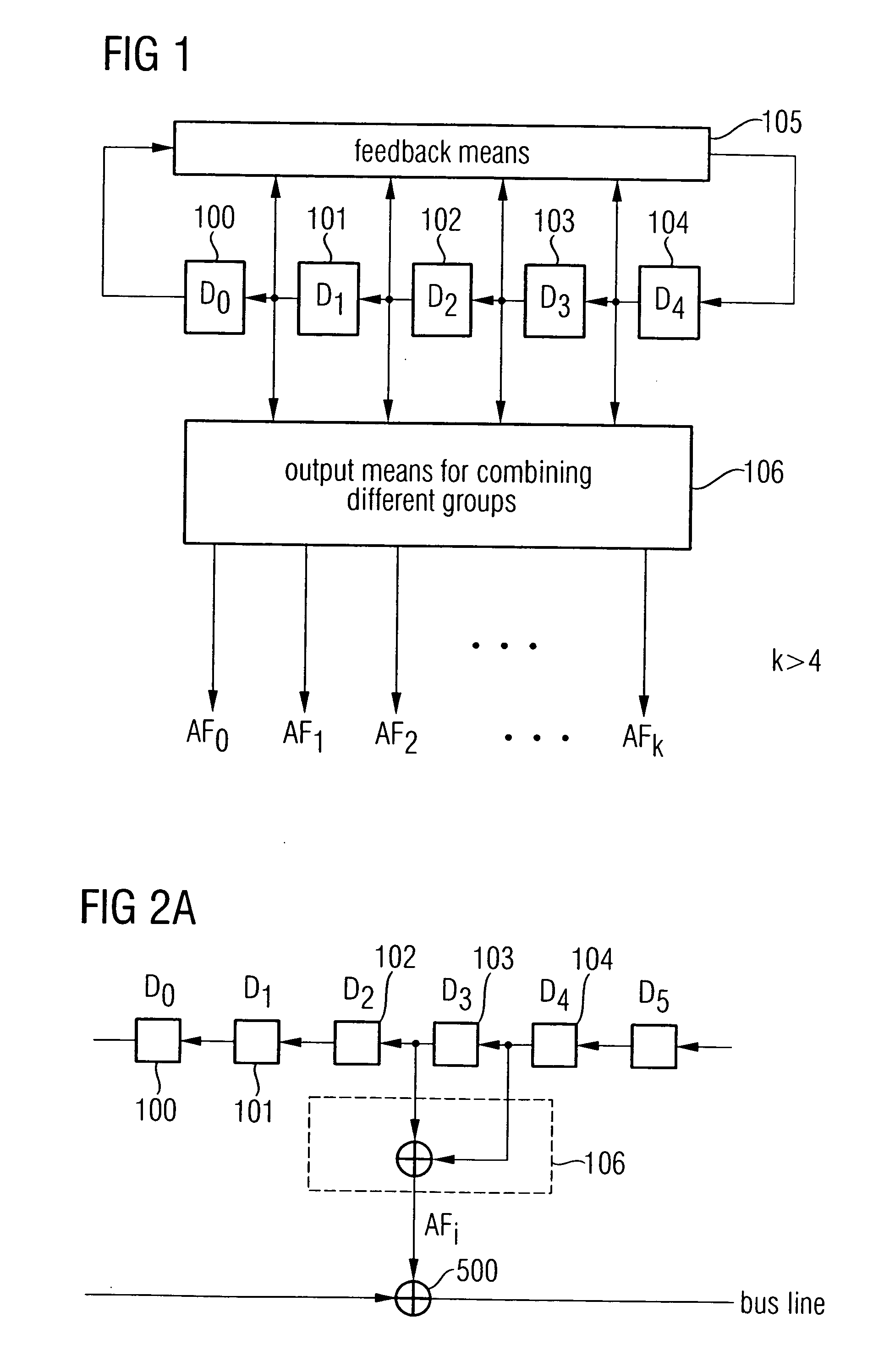Random number generator and method for generating random numbers
a random number and generator technology, applied in the field of pseudonymous number generators, can solve the problems of low linear complexity, increased hardware complexity, and increased linear complexity, and achieve the effect of safe and efficien
- Summary
- Abstract
- Description
- Claims
- Application Information
AI Technical Summary
Benefits of technology
Problems solved by technology
Method used
Image
Examples
Embodiment Construction
[0043] The present invention is based on the finding that the memory cell output sequences must not be used for bus encryption in a form “as they are” but that output sequences of a group of at least two memory cells have to be combined so that an output sequence is formed of a sequence of at least two (time-shifted) output sequences of the two memory cells.
[0044] Additionally, if another output sequence is generated by combining two different memory cells or by another combination of the same memory cells, the two output sequences obtained will not only be two sequences time shifted with regard to each other but otherwise identical, but also be pseudo-random bit sequences differing significantly from each other. If an attacker in this case finds out a key sequence for a bus line, he will by no means be able to decrypt all the other bus lines because he does not know from which original memory cell states the sequence has been generated and which combining means has been used. An a...
PUM
 Login to View More
Login to View More Abstract
Description
Claims
Application Information
 Login to View More
Login to View More - R&D
- Intellectual Property
- Life Sciences
- Materials
- Tech Scout
- Unparalleled Data Quality
- Higher Quality Content
- 60% Fewer Hallucinations
Browse by: Latest US Patents, China's latest patents, Technical Efficacy Thesaurus, Application Domain, Technology Topic, Popular Technical Reports.
© 2025 PatSnap. All rights reserved.Legal|Privacy policy|Modern Slavery Act Transparency Statement|Sitemap|About US| Contact US: help@patsnap.com



